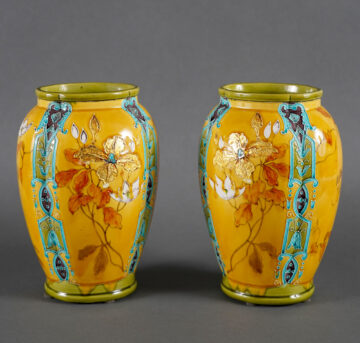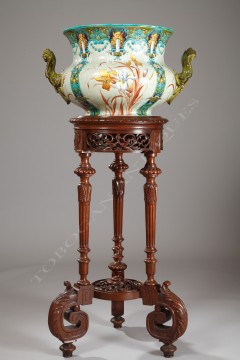
Gien Manufacture
In 1821, the English businessman Thomas Edme Hulm called “Hall”, who wanted to introduce fine English earthenware manufacturing techniques in France and after having sold the Montereau pottery factory run by his family since 1774, acquired in Gien, land and buildings of the former convent of the Minimes to install a new faience factory. This faiencerie was later called to worldwide fame. The company was in financial difficulties and quickly passed on ownership of the business several times during the period 1826 to 1862. A new partner, Jean-Félix Bapterosses, who recently bought the old ceramics factory of Briare, then came in 1866, bringing new capital to the manufacture. The company eventually became known as “Gien Faiencerie” in 1875 on the occasion of its transformation into a public company. Production first began with functional tableware, and then went on to make fancier dinnerware, decorative pieces and tableware emblazoned with notable families’ coats of arms, calling on the savoir-faire of talented potters. The climax of the production of faience of Gien was between 1855 and 1900 at the time of the famous Universal Exhibitions, during which they won numerous awards.

